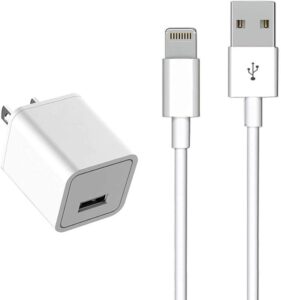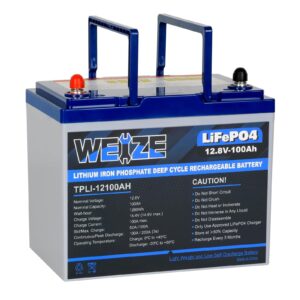Are you wondering what exactly a battery charger is? Well, let’s dive right in and find out! A battery charger is a device that replenishes the energy in a battery, allowing you to reuse it multiple times. Whether you need to power up your smartphone, camera, or even an electric vehicle, a battery charger is the handy solution you’ve been looking for. In this article, we’ll explore the ins and outs of battery chargers, how they work, and their various types and applications. So, if you’ve ever wondered what is a battery charger and how it can simplify your life, keep reading!
What is a Battery Charger?
A battery charger is a device that replenishes the energy in rechargeable batteries. It is designed to provide a controlled electrical current to the battery, allowing it to regain its charge and be used again. Battery chargers come in various types, sizes, and functionalities to meet the different needs and requirements of various battery-powered devices.
How Does a Battery Charger Work?
A battery charger works by converting an AC (alternating current) input voltage from a power source into a DC (direct current) output voltage suitable for charging batteries. The charging process involves several stages to ensure safe, efficient, and optimal charging. Let’s explore each stage in detail:
1. Constant Current (CC) Stage
In the initial stage of battery charging, the charger supplies a constant current to the battery, allowing it to charge quickly. This stage is essential for replenishing the battery’s capacity and increasing the charge level. The charger adjusts the current flow to match the battery’s charging requirements, preventing overcharging or damage.
2. Constant Voltage (CV) Stage
Once the battery voltage reaches a certain threshold, the charger switches to the constant voltage stage. In this stage, the charger maintains a steady voltage while reducing the current flow. The constant voltage helps prevent overcharging and provides a gradual, controlled charge to the battery.
3. Trickle Charge Stage
Some battery chargers have a trickle charge stage, which is optional but beneficial for certain battery types. During this stage, the charger provides a minimal current to the battery, compensating for any self-discharge and keeping the battery fully charged until ready for use. Trickle charging is commonly used for lead-acid batteries and helps extend their lifespan.
Types of Battery Chargers
There are several types of battery chargers available, each suited for specific battery chemistries, capacities, and applications. Let’s explore some of the commonly used types:
1. Plug-in Chargers
Plug-in chargers are the most basic type of battery chargers, commonly used for small electronic devices such as smartphones, tablets, and cameras. These chargers usually come with the device and are designed to charge the batteries internally.
2. USB Chargers
USB chargers have become increasingly popular due to the widespread use of USB ports in electronic devices. They utilize the Universal Serial Bus (USB) interface to connect the charger to a power source, allowing convenient charging through various devices such as computers, wall adapters, or car chargers.
3. Overnight Chargers
Overnight chargers, as the name suggests, are designed to charge batteries overnight. They typically provide a slow and steady charge, preventing overcharging or overheating. These chargers are commonly used for household rechargeable batteries like AA or AAA batteries.
4. Fast Chargers
Fast chargers are designed to charge batteries at a significantly faster rate than standard chargers. They utilize advanced charging algorithms and higher current outputs to reduce charging time. Fast chargers are commonly used in professional settings or for batteries with high capacities, such as those used in electric vehicles or power tools.
5. Solar Chargers
Solar chargers harness the power of the sun to charge batteries. They consist of solar panels that convert sunlight into electrical energy, which is then used to charge the batteries. Solar chargers are portable, eco-friendly, and ideal for outdoor activities where access to traditional power sources may be limited.
Choosing the Right Battery Charger
When selecting a battery charger, it’s essential to consider the following factors to ensure compatibility, safety, and optimal charging performance:
1. Battery Chemistry
Different battery chemistries, such as lithium-ion, nickel-metal hydride (NiMH), or lead-acid, have specific charging requirements. It’s crucial to choose a charger that is compatible with the battery chemistry you intend to charge.
2. Battery Capacity
The charger should be able to provide an appropriate charging current based on the battery’s capacity. Insufficient current may result in slow charging, while excessive current can damage the battery.
3. Safety Features
Look for chargers with built-in safety features such as overcharge protection, short-circuit protection, and temperature monitoring. These features help prevent overcharging, overheating, and potential accidents.
4. Charge Time and Charging Profiles
Consider the charging time required by the charger and whether it offers different charging profiles for specific battery types. Fast chargers may be preferable for certain applications, while others may require a slower, more controlled charge.
Tips for Battery Charger Maintenance and Safety
To ensure the longevity and safe operation of your battery charger, consider the following maintenance and safety practices:
1. Read the Manual
Always refer to the product manual and follow the manufacturer’s instructions for proper usage, maintenance, and safety precautions.
2. Cleanliness
Keep the charger and its surroundings clean and free from dust, debris, or moisture that can interfere with its operation or cause electrical hazards.
3. Temperature and Ventilation
Avoid exposing the charger to extreme temperatures or direct sunlight. Ensure proper ventilation to prevent overheating, especially during extended charging periods.
4. Unplugging
When not in use, unplug the charger from the power source. This helps conserve energy and reduces the risk of electrical hazards.
5. Compatibility
Use the charger only with compatible batteries and avoid using damaged or faulty chargers. Using an incompatible charger can lead to poor charging performance or damage the battery.
6. Storage
Store the charger in a cool, dry place away from moisture, direct sunlight, or potential damage. Proper storage helps maintain its functionality and extends its lifespan.
A battery charger is an essential device for recharging rechargeable batteries efficiently and safely. With various types of chargers available, it’s crucial to choose the right charger that matches your battery’s chemistry, capacity, and usage requirements. Following proper maintenance and safety practices will ensure the longevity and optimal performance of your battery charger.
Frequently Asked Questions
What is a battery charger?
A battery charger is a device that replenishes energy to rechargeable batteries by supplying an electric current to the battery. It restores the energy lost during discharge, allowing the battery to be used multiple times.
How does a battery charger work?
A battery charger works by converting electrical energy from a power source, such as an AC outlet or a USB port, into the appropriate voltage and current needed to recharge a battery. It regulates the charging process to prevent overcharging and ensures the battery receives the right amount of charge.
What types of batteries can a battery charger charge?
A battery charger can charge various types of batteries, including rechargeable lithium-ion (Li-ion), nickel-cadmium (NiCd), nickel-metal hydride (NiMH), and lead-acid batteries. However, it is important to use a charger that is specifically designed for the type of battery you want to charge to avoid damage or safety risks.
Can a battery charger charge different battery sizes?
Yes, battery chargers are typically designed to charge batteries of different sizes. They often have adjustable charging settings or come with multiple charging slots to accommodate various battery sizes, such as AA, AAA, C, D, and 9-volt batteries.
Are all battery chargers the same?
No, battery chargers differ in terms of their charging capabilities, charging speed, compatibility with different battery types, and additional features. Some chargers have advanced charging algorithms and safety mechanisms, while others may be more basic. It is important to choose a charger that suits your specific needs and the batteries you use.
Can I leave a battery charging overnight?
Leaving a battery charging overnight is generally safe with modern battery chargers. However, it is advisable to check the manufacturer’s instructions and follow their recommendations. Some chargers have built-in mechanisms to terminate or reduce the charging current once the battery reaches full capacity to prevent overcharging.
Final Thoughts
A battery charger is a device used to recharge batteries by supplying them with electric current. It is a vital tool for keeping our electronic devices and vehicles powered up and ready to use. Battery chargers are designed to be portable, convenient, and easy to use. They come in various sizes and types, including wall chargers, car chargers, and wireless chargers. With advancements in technology, battery chargers have become more efficient and can charge multiple devices simultaneously. Whether you need to recharge your phone, laptop, or electric vehicle, a battery charger is essential for ensuring that you never run out of power. So, what is a battery charger? It’s a reliable and indispensable device for keeping our batteries charged and ready to go.


